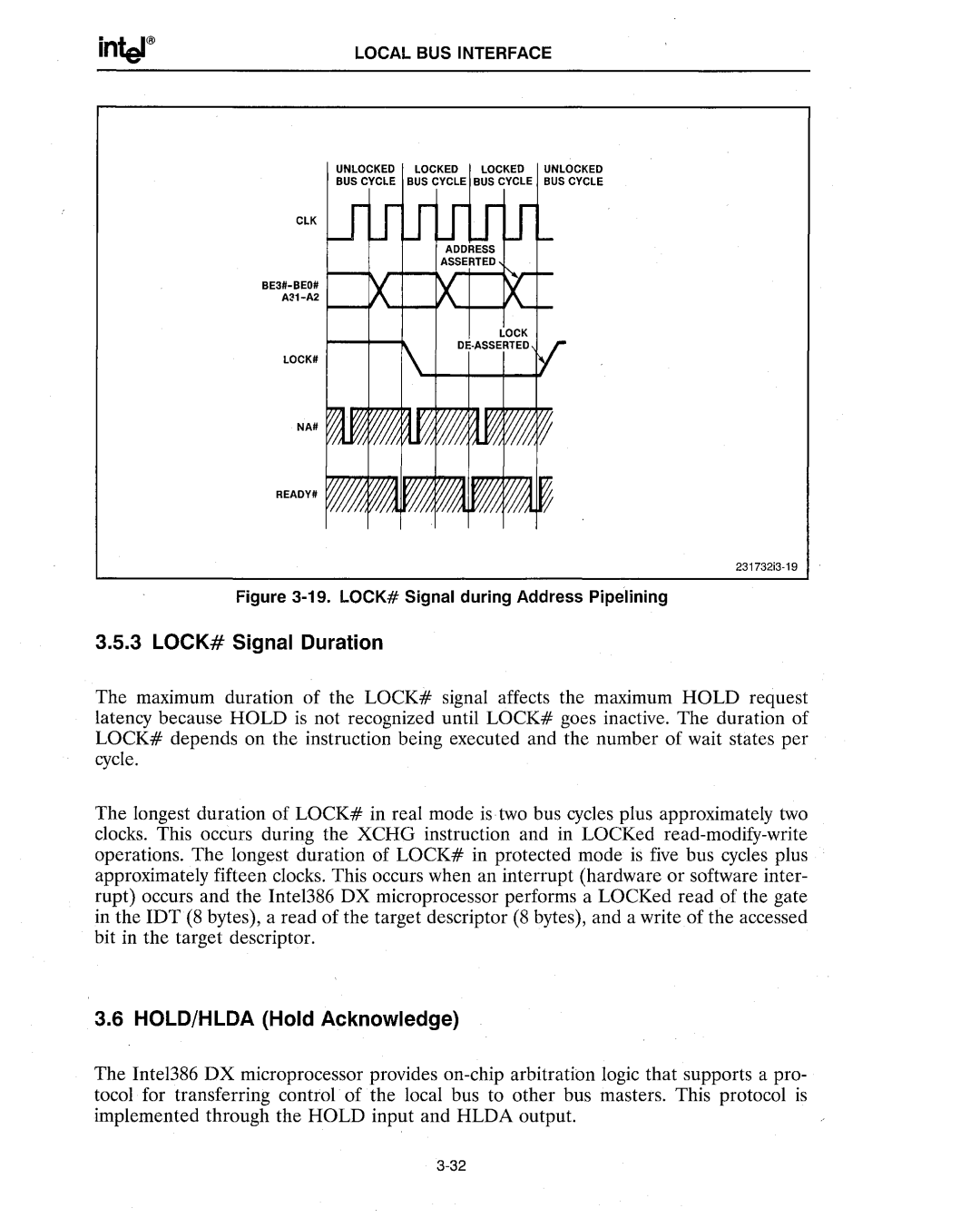
LOCAL BUS INTERFACE
UNLOCKED lOCKED lOCKED UNLOCKED
BUS CYCLE BUS CYCLE BUS CYCLE BUS CYCLE
ClK
lOCK#
NA#
READY#
Figure 3-19. LOCK# Signal during Address Pipelining
3.5.3 LOCK# Signal Duration
The maximum duration of the LOCK# signal affects the maximum HOLD request latency because HOLD is not recognized until LOCK# goes inactive. The duration of LOCK# depends on the instruction being executed and the number of wait states per cycle.
The longest duration of LOCK# in real mode is two bus cycles plus approximately two clocks. This occurs during the XCHG instruction and in LOCKed
3.6 HOLD/HLDA (Hold Acknowledge)
The Inte1386 DX microprocessor provides
